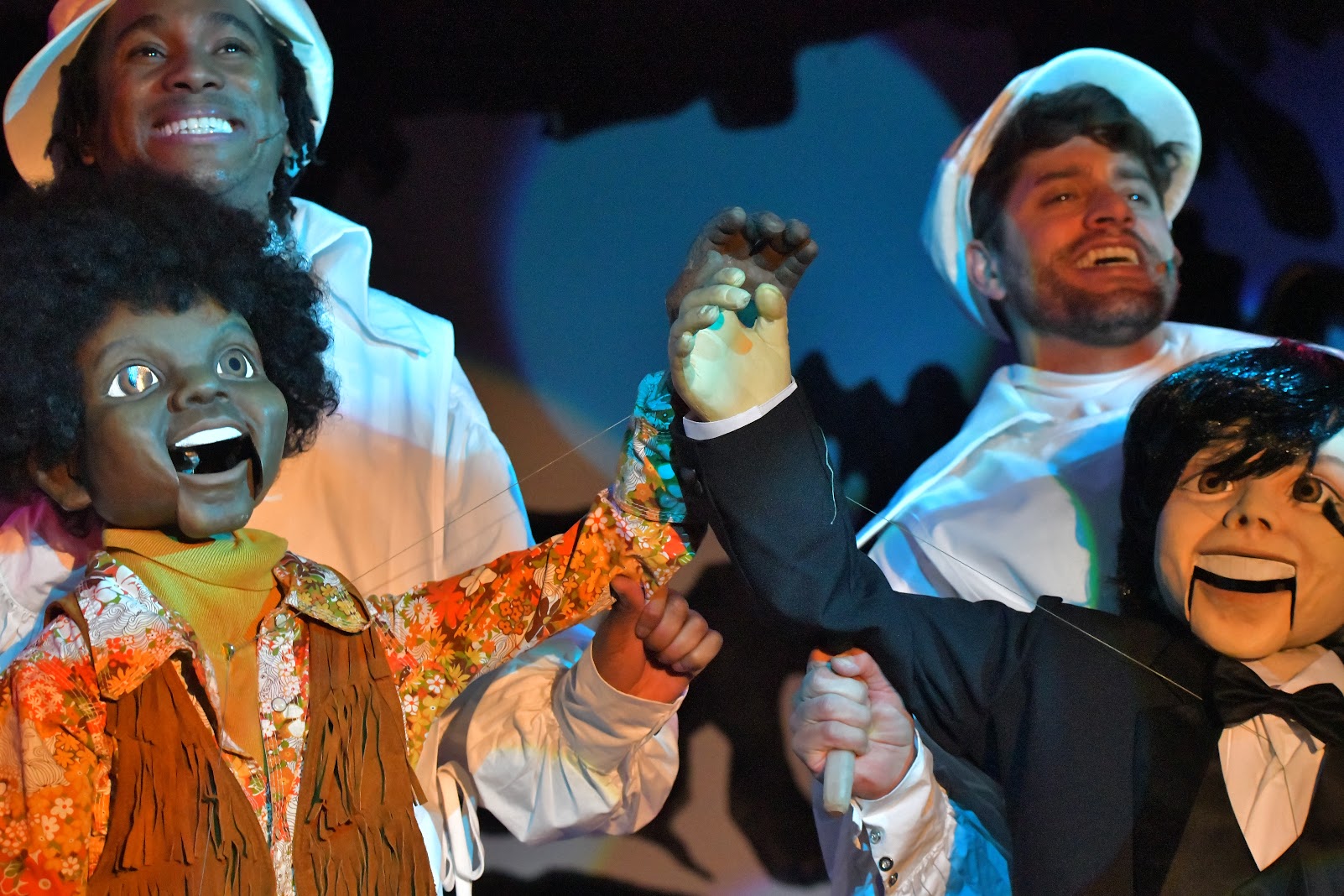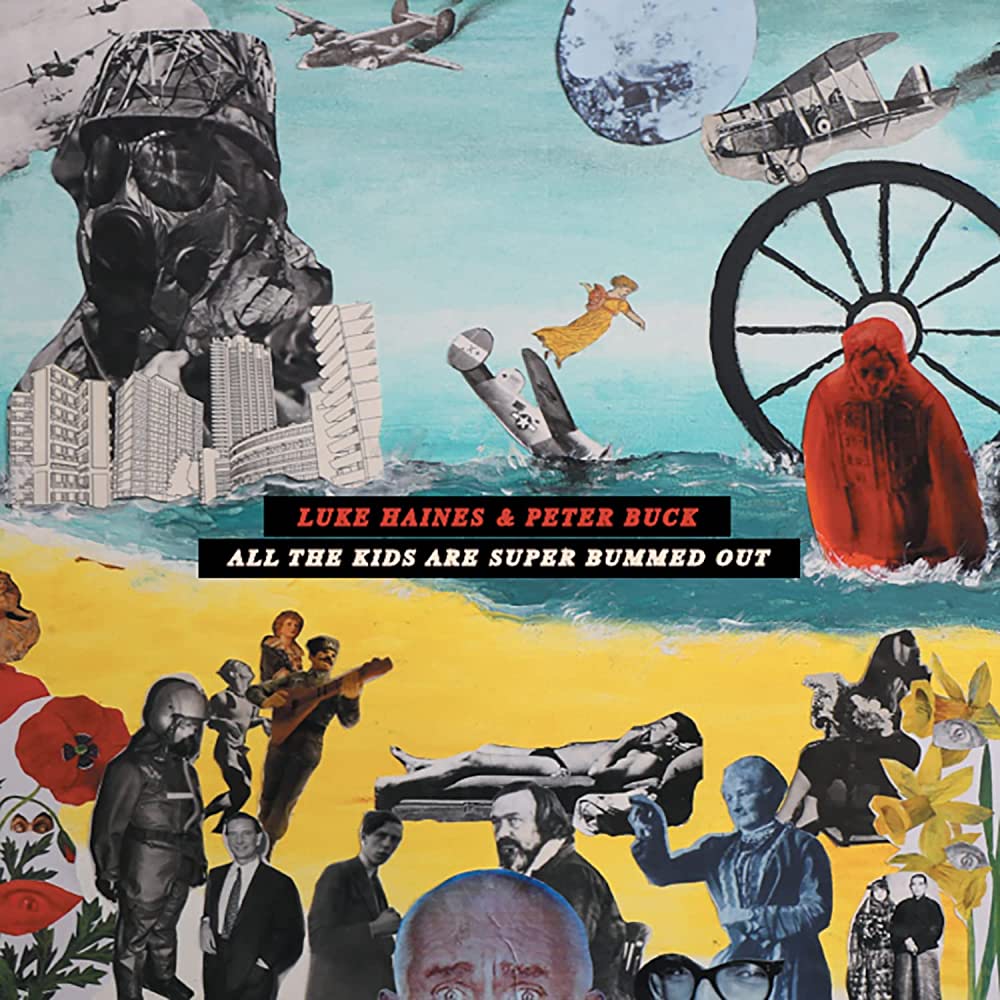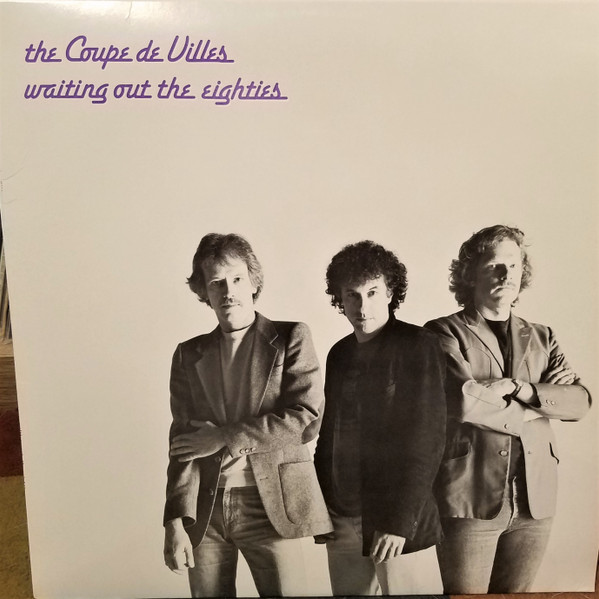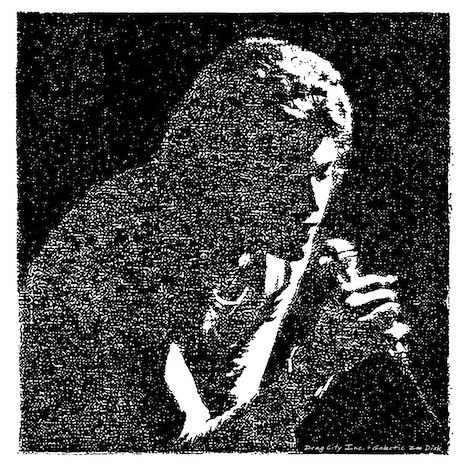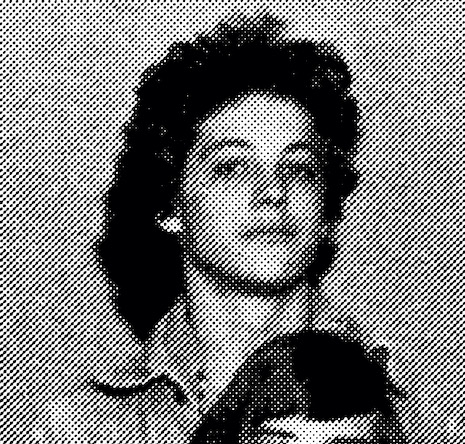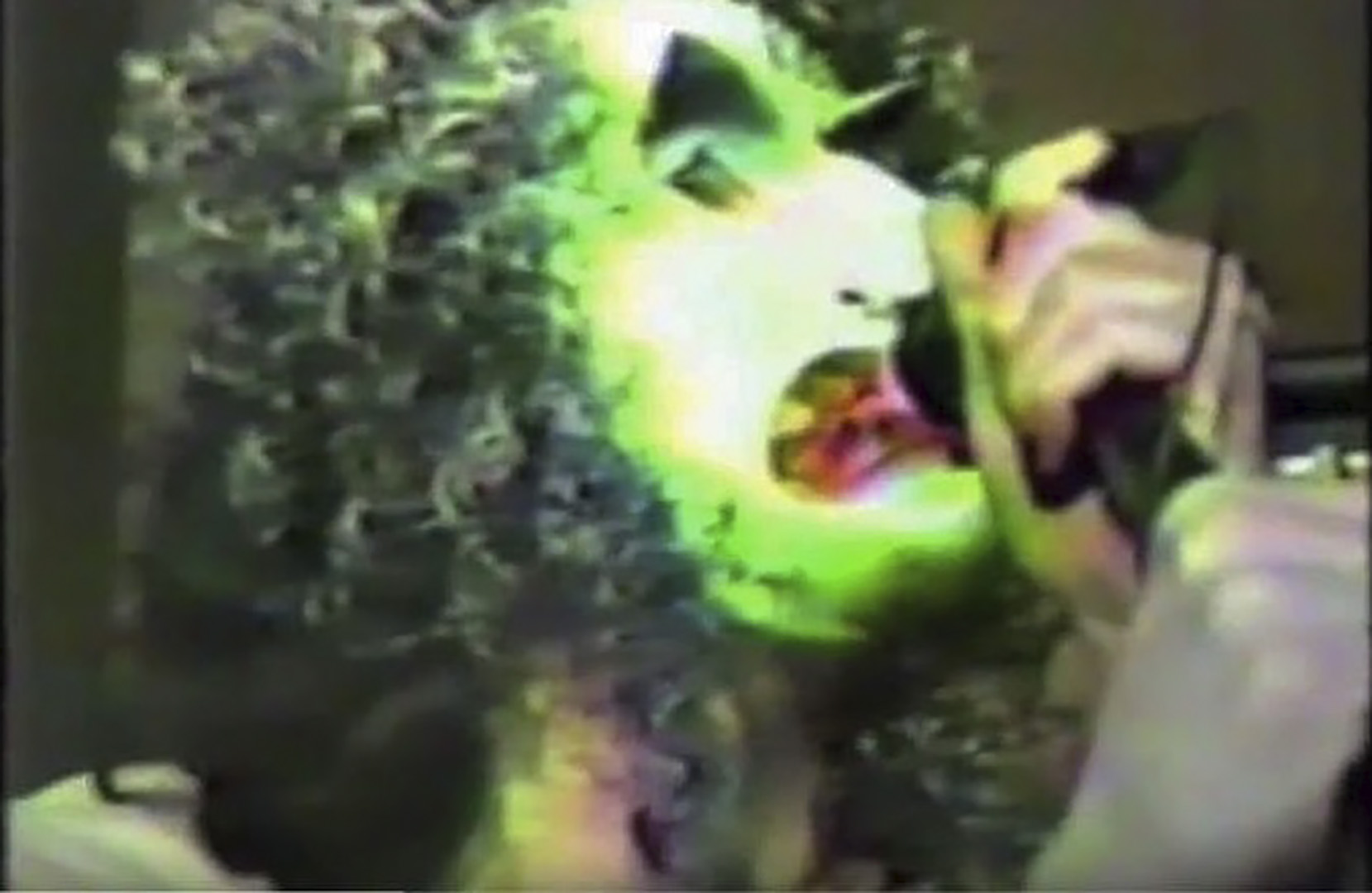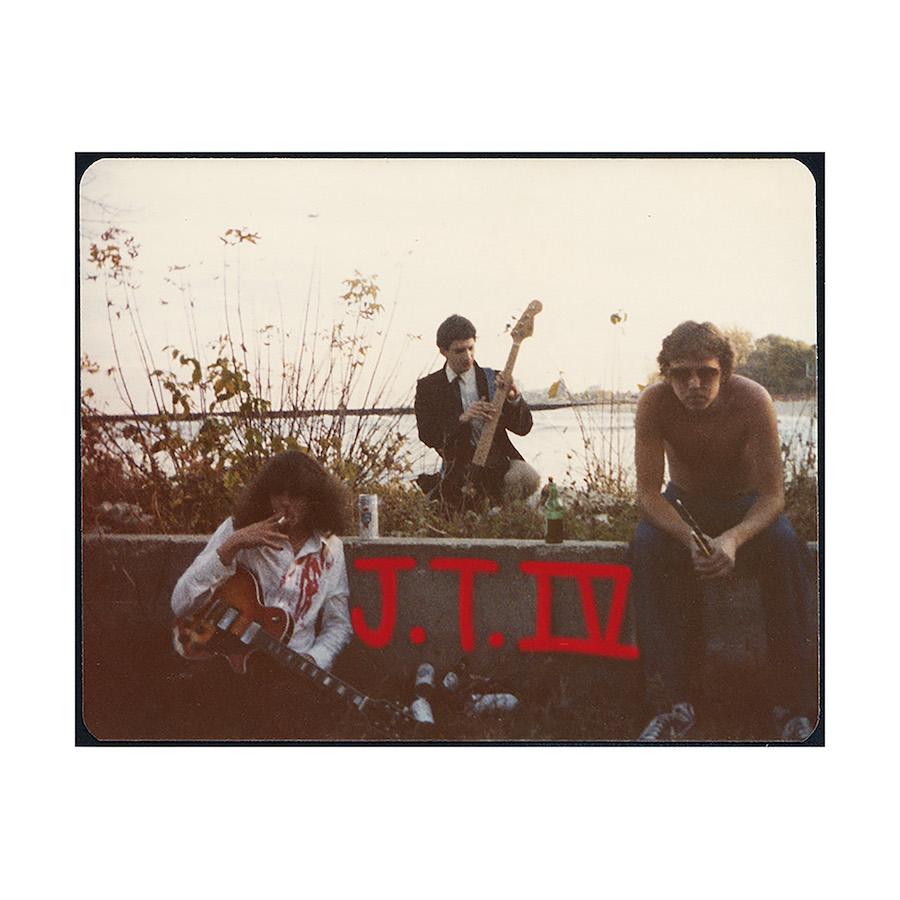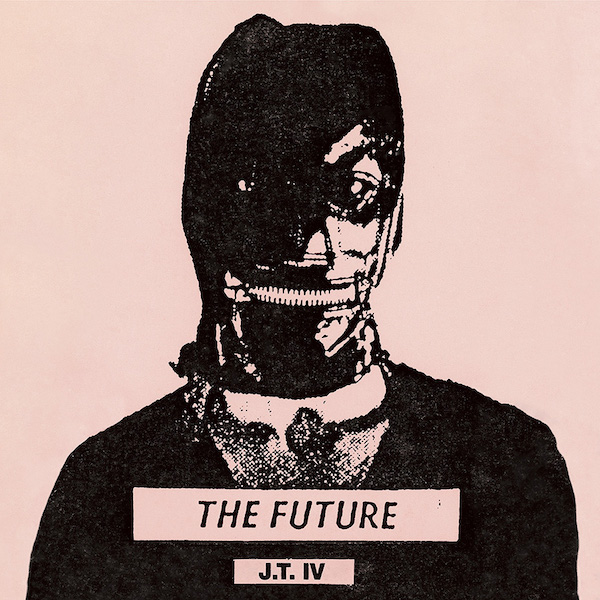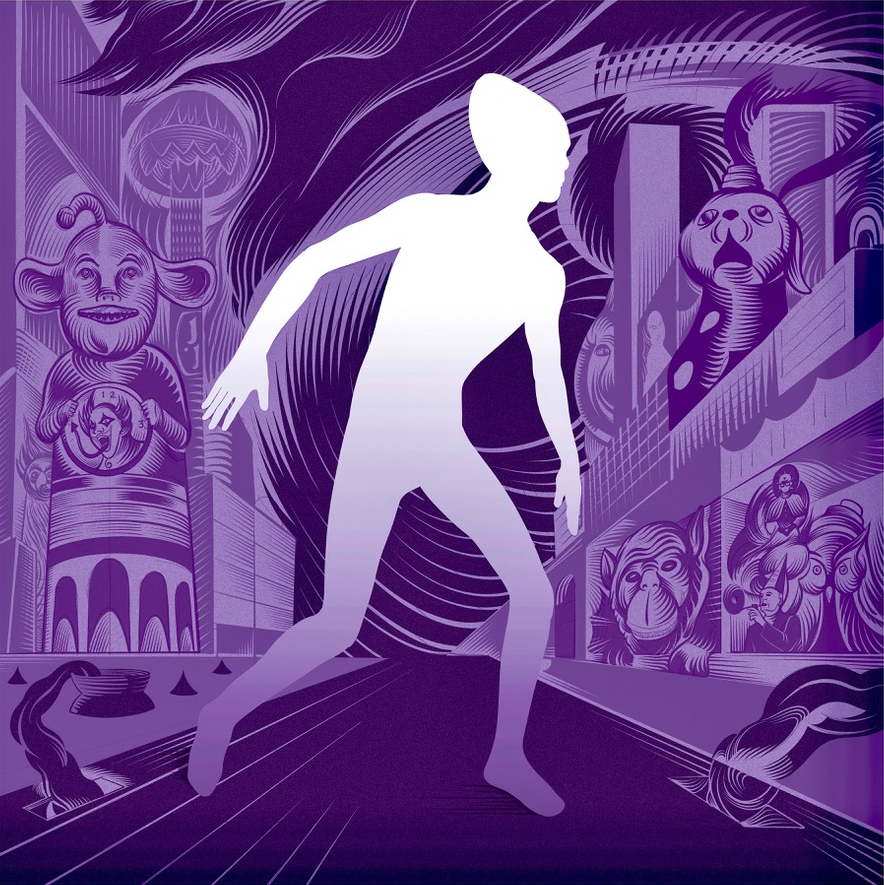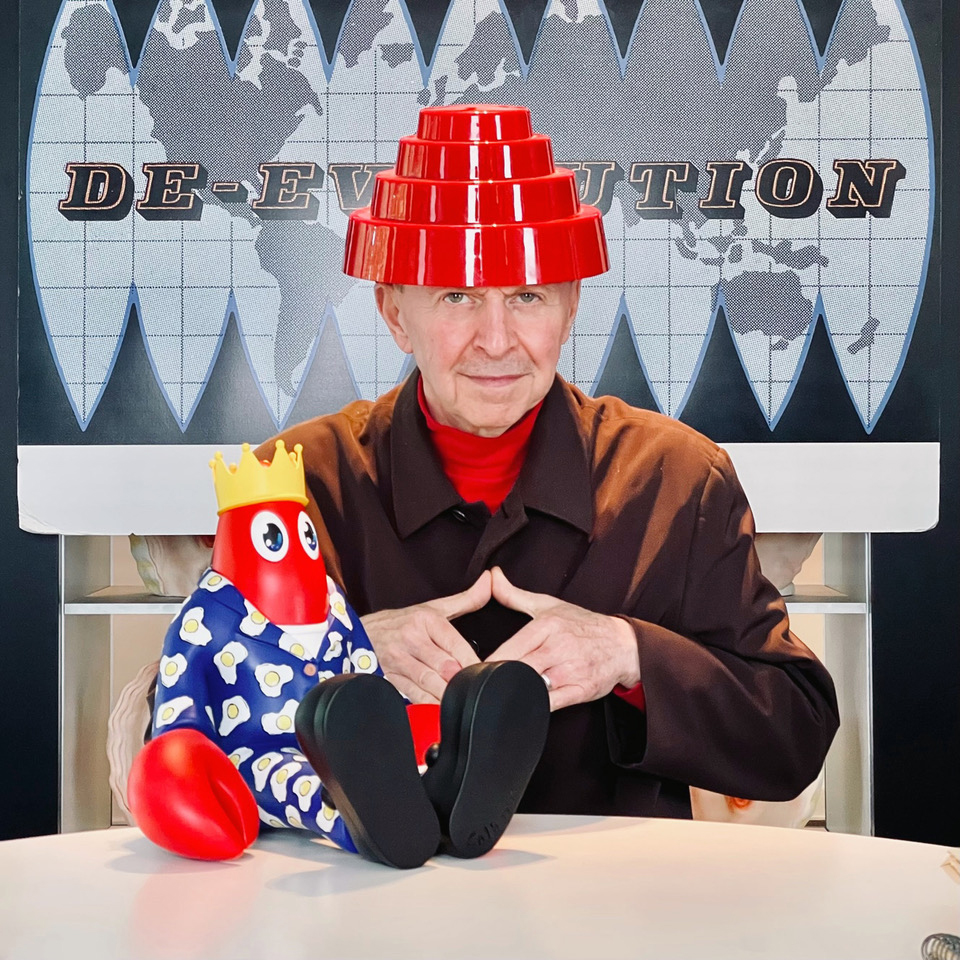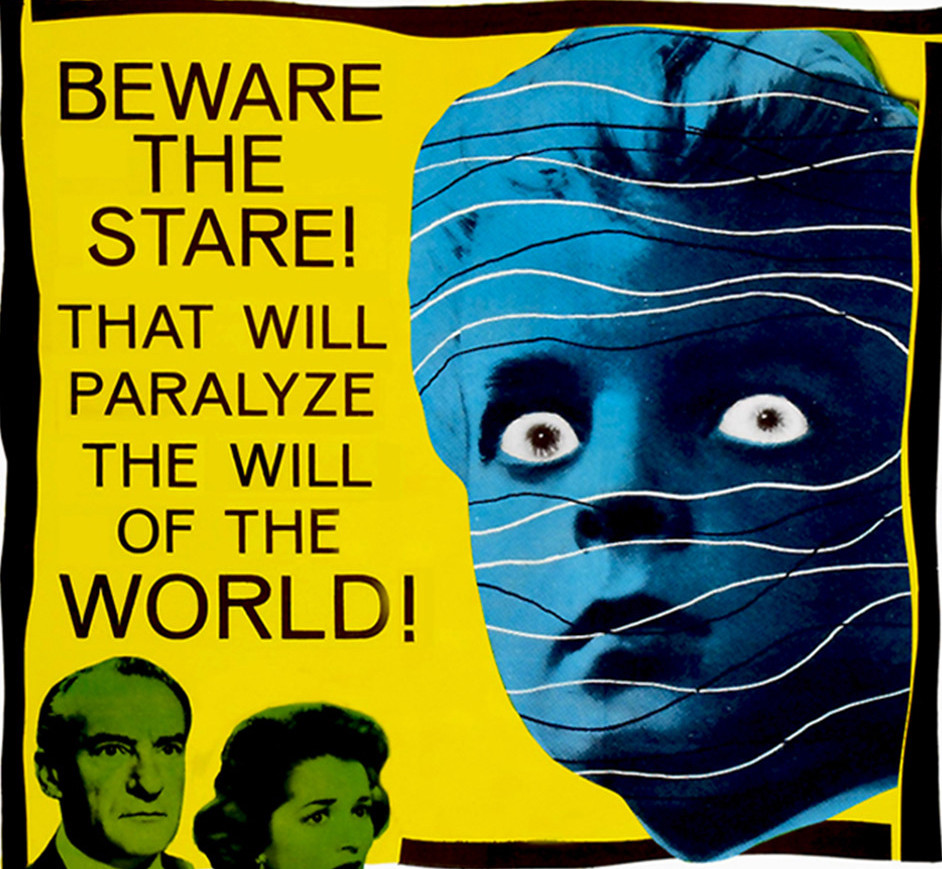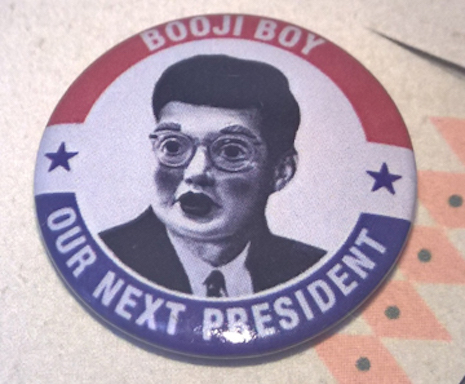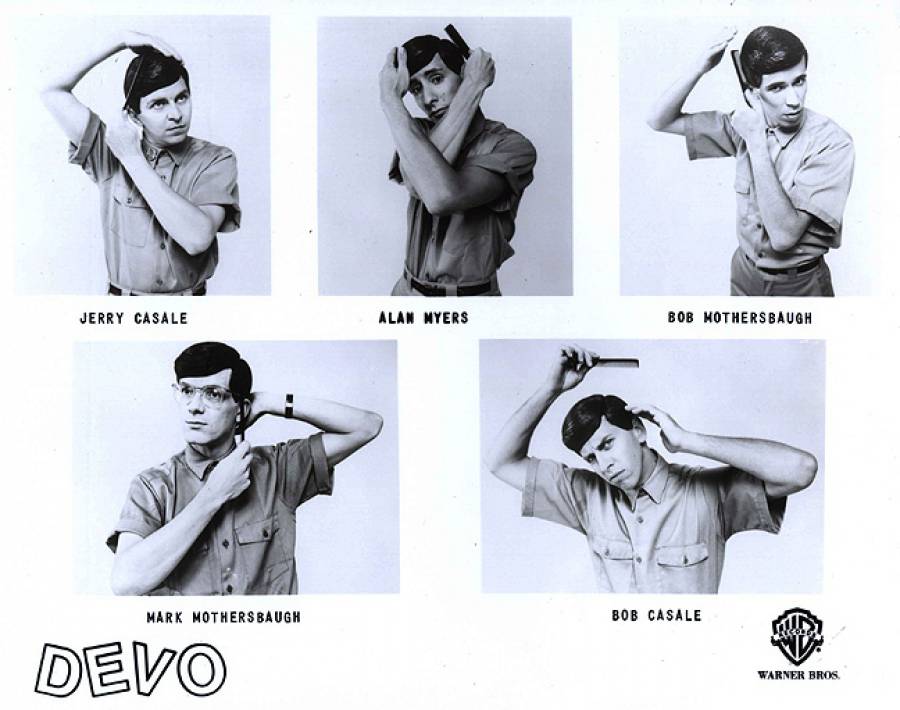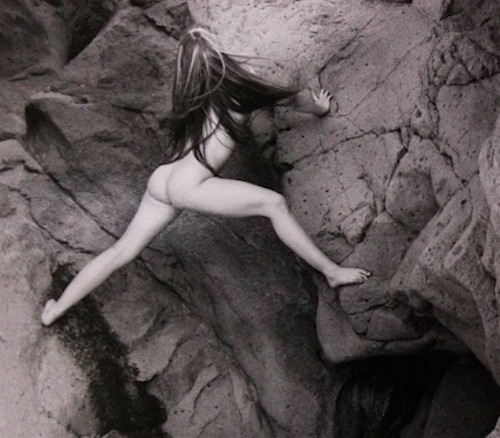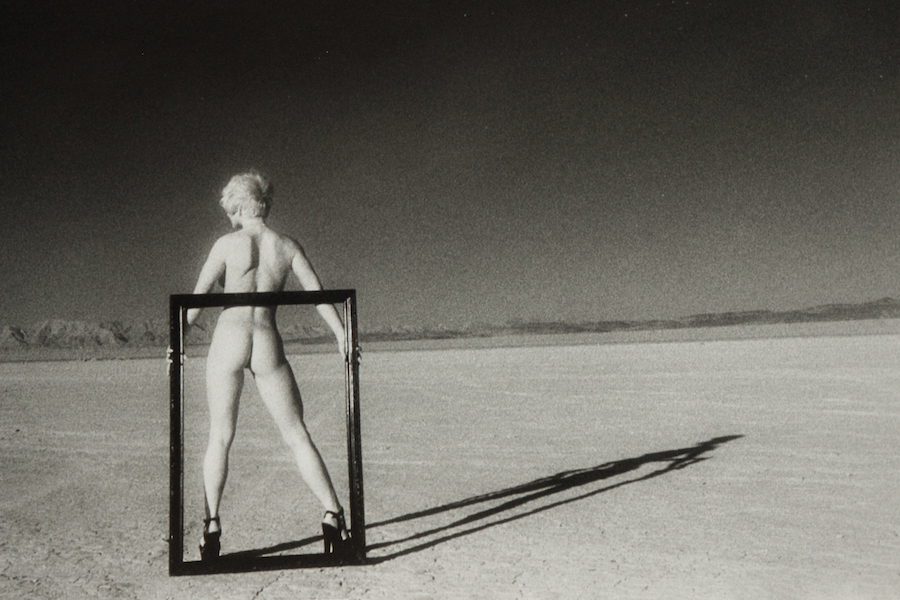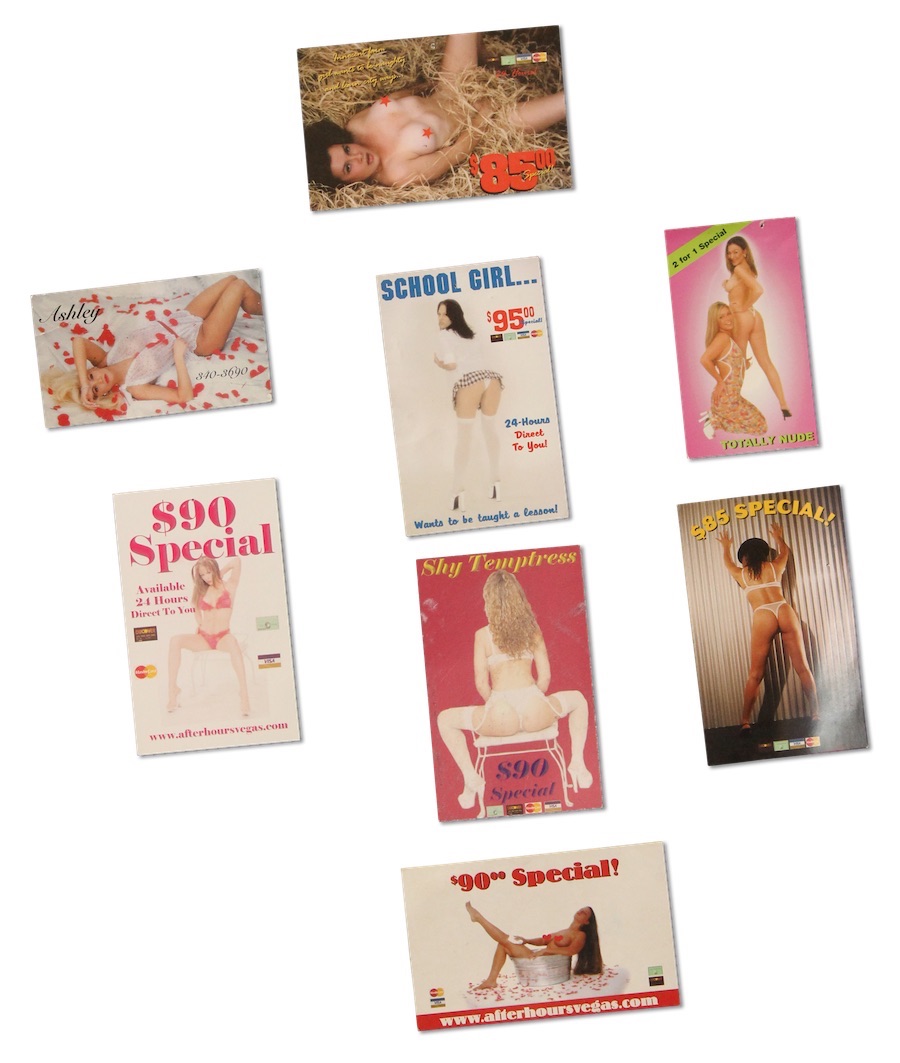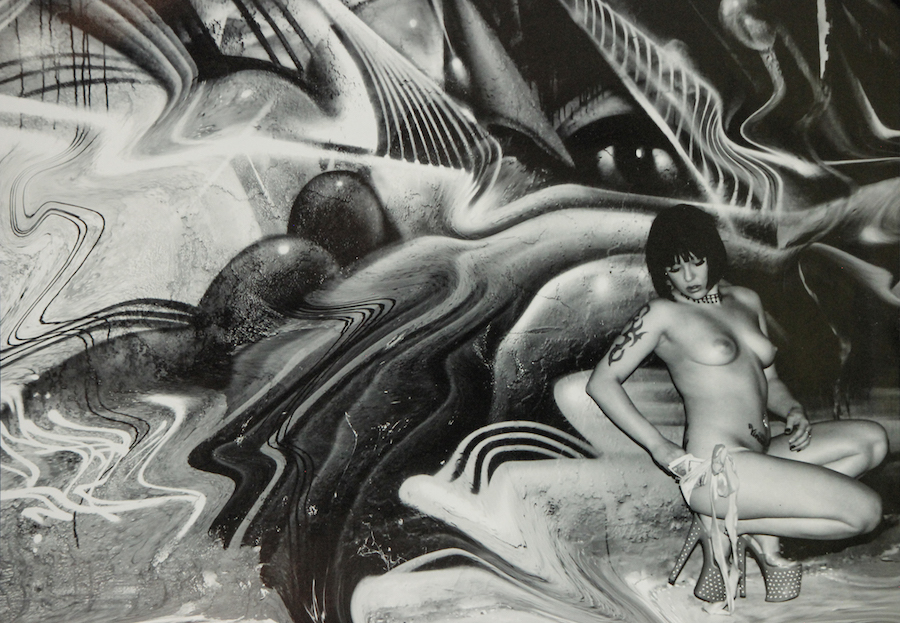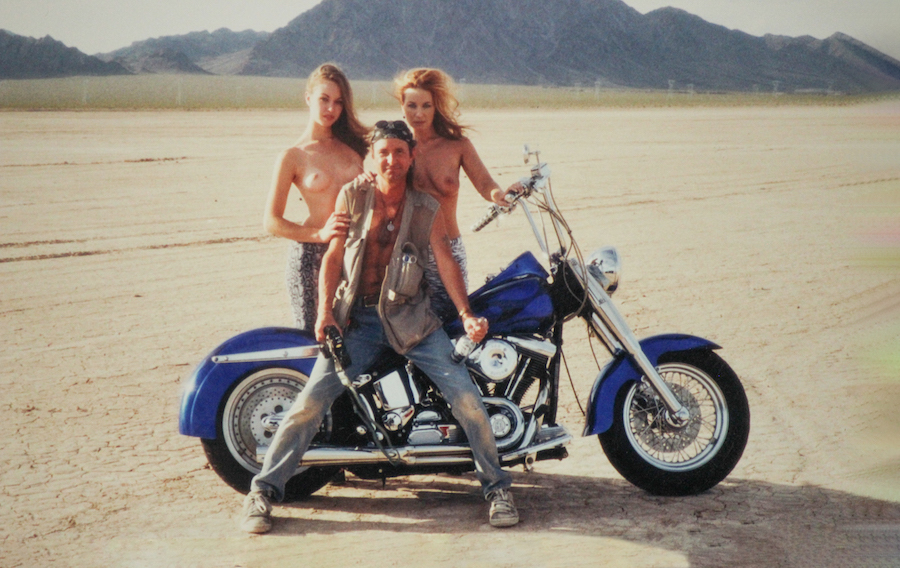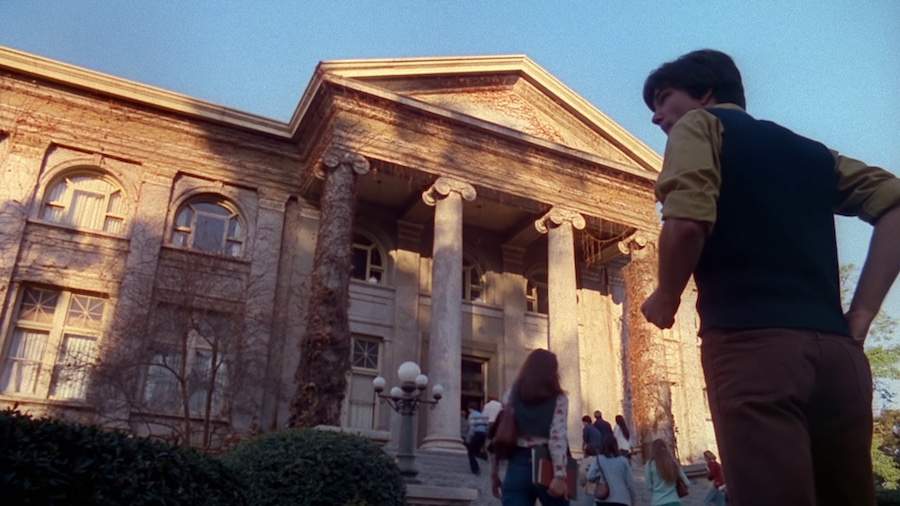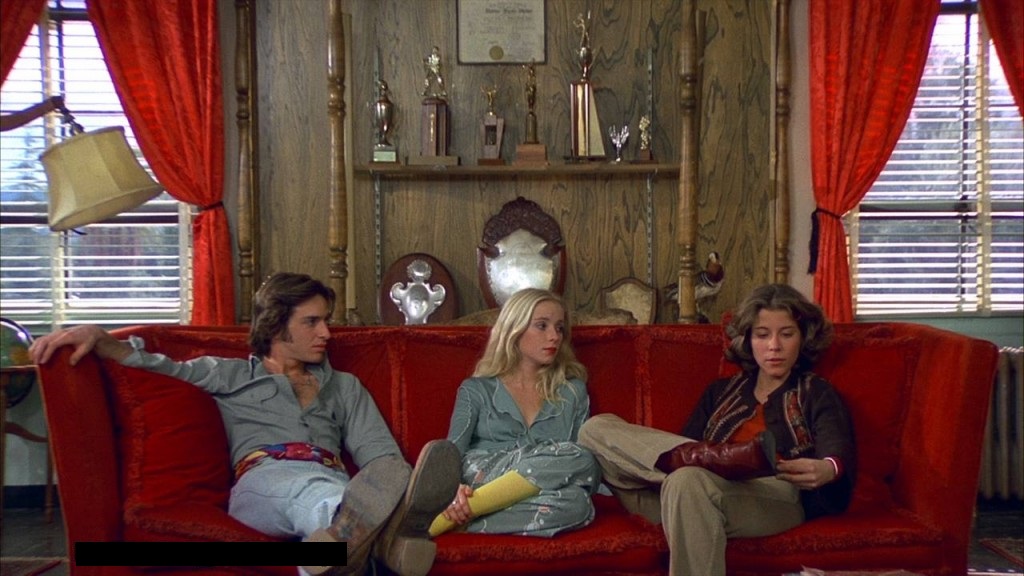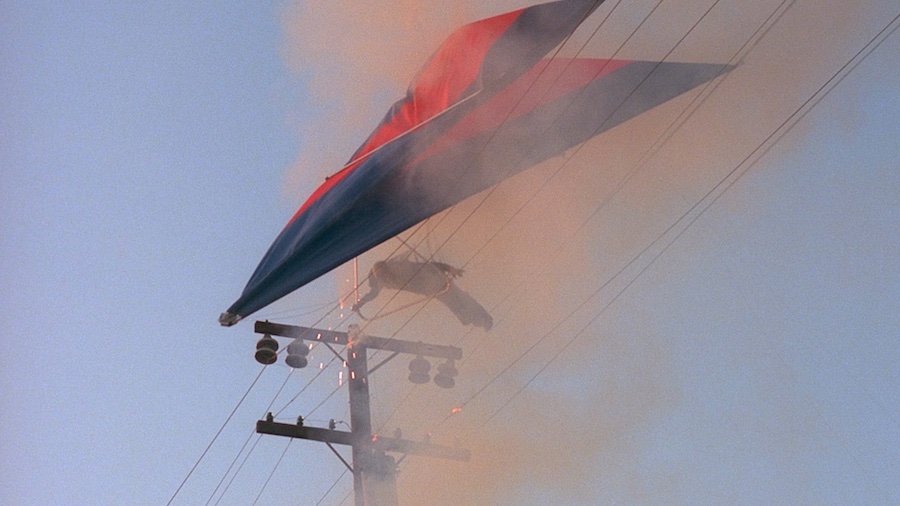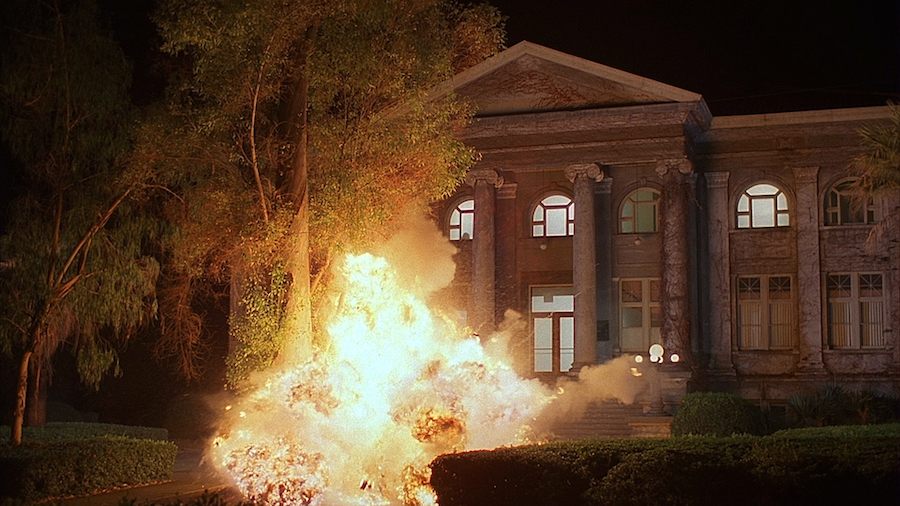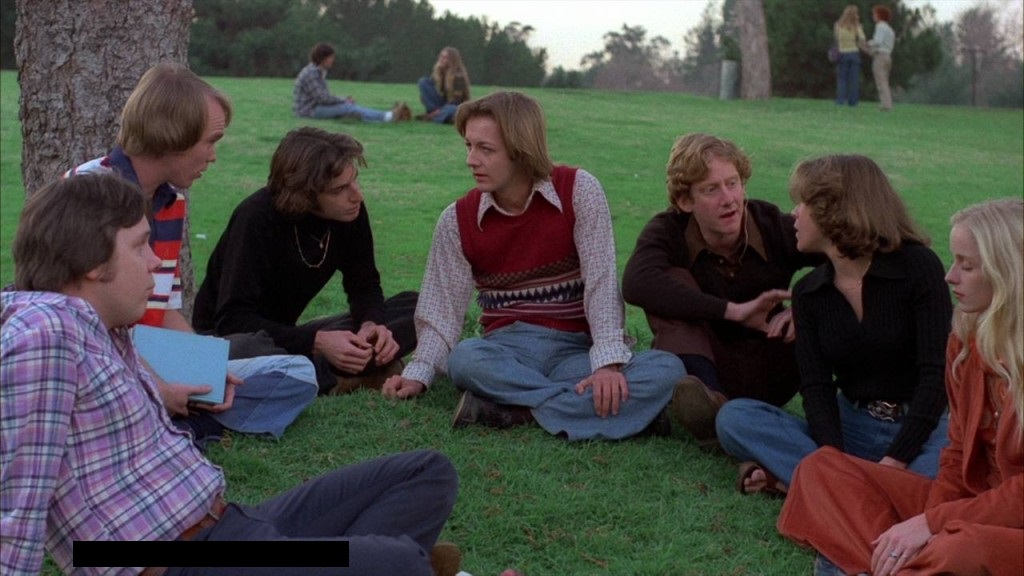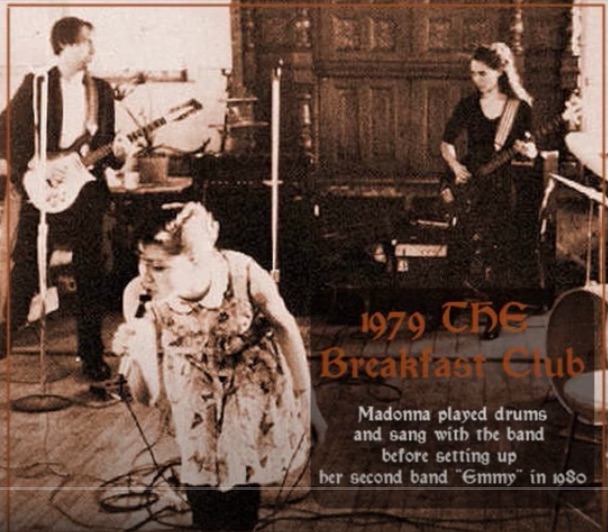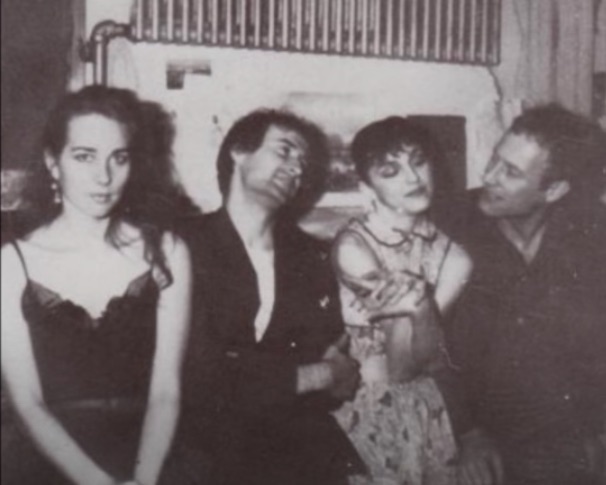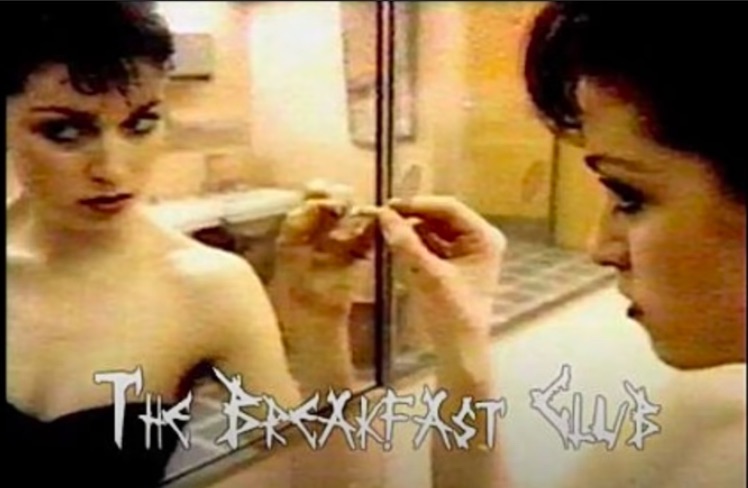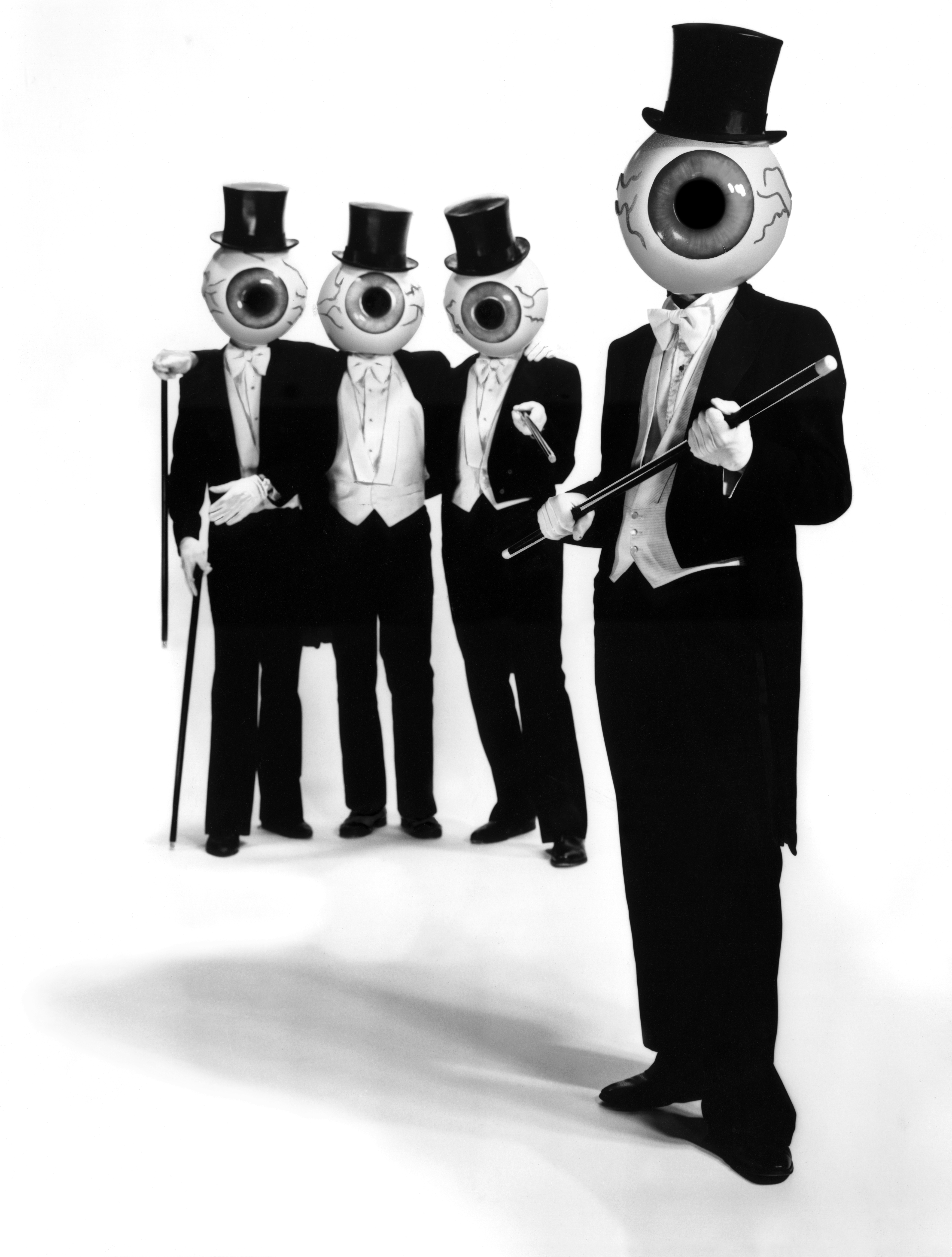
THEM! courtesy of the Cryptic Corporation
When everyone lives in the future, the present is au revoir.
—Delta Nudes
Last Christmas marked the fiftieth anniversary of the Residents’ first release, “Santa Dog.” Ralph Records gave away most of the initial pressing as a free gift, mailing copies of the double seven-inch record, which presented itself as a compilation of songs by four groovy groups, to friends, tastemakers, and prominent figures.
If the White House had not refused its complimentary copy of “Santa Dog,” President Nixon, his wife Pat, and their daughters, Tricia and Julie, would not have been deprived of the chance to spin it a few times on the Blue Room hi-fi as the Yule log crackled in the fireplace and the bombs of Operation Linebacker II pulverized North Vietnam. Though side one, “Fire,” credited to Ivory and the Brain Eaters, would have been the Nixons’ likely favorite, the First Family would have read in the sleeve notes that side four, “Aircraft Damage” (B Barnes–C America), credited to Arf and Omega featuring the Singing Lawn Chairs, was “FROM THE RALPH FILM ‘VILENESS FATS’ COMING SOON TO A THEATER NEAR YOU.”
Fifty years is a long time. Today, Dick and Pat are buried in the cold ground, original copies of “Santa Dog” fetch as much as a Pontiac Grand Prix, and you can tell Tricia and Julie that Vileness Fats really is coming to a theater near them! Sort of: every date of the imminent “Faceless Forever” U.S. tour will open with a screening of Triple Trouble, the Residents’ new feature film, which revisits their abandoned movie project of the early seventies and incorporates some of its footage into a brain-syruping psychodrama about Randy Rose, Jr., a lapsed priest harried by fungus in his encore career as a plumber.
Like the new Residents encyclopedia by Jim Knipfel and Brian Poole (also titled Faceless Forever), the Triple Trouble screenings and live shows are part of the Residents’ fiftieth anniversary festivities. I caught up with the group’s spokesperson, Cryptic Corporation President Homer Flynn, who once again graciously fielded my questions about the Residents’ diet, wardrobe, hair products, LaserDisc easter eggs and CD-ROM cheat codes.

In the atomic shopping carts, 1974 (courtesy of the Cryptic Corporation)
What can you tell me about the tour?
Well, you know, it’s a fiftieth anniversary tour, so it’s really retrospective. I mean, the selection of material for this tour, you know, came about in a kind of almost random, haphazard way. I mean, this is the third time it’s been scheduled. So it started out two, three years ago as a “Dog Stab” tour with the idea at that time that we were mainly interested in having them promote the Metal, Meat & Bone album, which was new at that point. But then we added a good chunk of Duck Stab! material to that. Kind of trying to come up with a balance between what was new and we wanted to promote and what the band wanted to play and then what the fans were interested in. And then that tour got cancelled, and then rescheduled and slightly jiggered around a little bit, and then that one got cancelled.
Well, by the time that happened, we were looking at the fiftieth anniversary and Metal, Meat & Bone, while everybody likes the album, it’s still not as relevant from a marketing and promo point of view. So ultimately, we left a good chunk of Metal, Meat & Bone in there, left a good chunk of Duck Stab! And then ultimately, they filled in with a lot of other classic Residents material. And I think it’s a good set. [Laughs] It’s not the way anybody would have chosen to put it together, but the last three years have been crazy. What can you say?

At the Golden Gate Bridge, 1979 (courtesy of the Cryptic Corporation)
I’m still kicking myself for missing the Duck Stab! shows. There was a Third Reich ‘n Roll encore?
There was indeed. Yeah, and you know they had a lot of fun with that. I mean, you know interestingly, there is a guy, [Scott Colburn], an audio engineer in Seattle, who has been doing a lot of the remastering of the back catalog series that Cherry Red has been putting out, and he’s a huge fan. He’s a great guy. And basically, he volunteered to go back and digitize all of the old multitrack original tapes. So all of a sudden, you know, you could take all of the original tracks from Duck Stab! and put them into Logic if you wanted to. And then all of a sudden that material was accessible again, and they got very excited about that idea.
They only did, that was kind of like, I call it the “California mini-tour.” It was the tour a year and a half ago that then ultimately, most of it was canceled other than four or five, three or four California shows. So they never really got to the point with the Third Reich ‘n Roll material where they were super comfortable with it, because part of what’s happening is stuff is coming from the original tapes, and then part of it is being played, and it’s all pretty loose. And I think everybody would agree that some of it works better than others.
But I think they have in mind going back and revisiting that again. I mean, you know, they could do a suite from Eskimo if they wanted to. There’s a lot of possibilities with that material.
Since you mentioned it, there was a plan for an Eskimo opera or stage show at one time, right? But I don’t think that’s ever been a live show.
No, there never has. I mean, interestingly, this is my favorite story about that: there is a guy who was a programmer at the South Bank Center in London, a guy named Glenn Max. And Glenn was a big Residents fan. He booked them for a few different festivals and events while he was there. And there was a period, I don’t know, ten or twelve years ago, something like that, when the South Bank Center was shut down for remodeling, and he had it in his mind, he was looking for other venues around London in order to try to do different shows. One of his ideas was to do a version of Eskimo on ice.
More Residents, after the jump…








